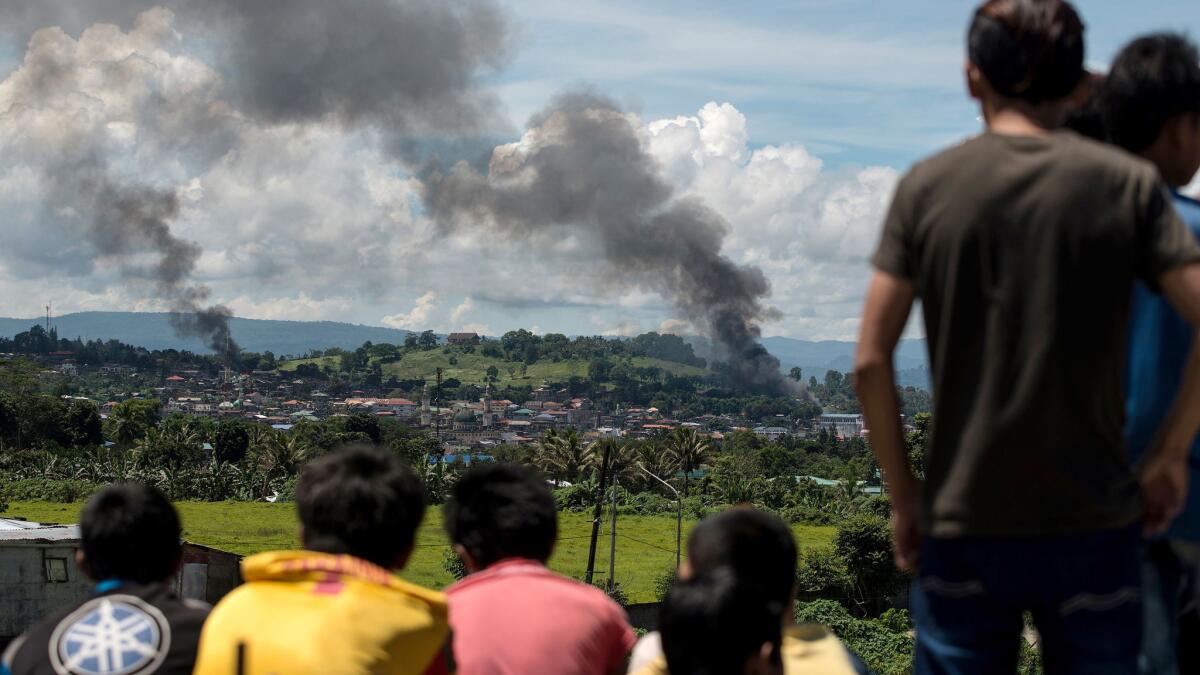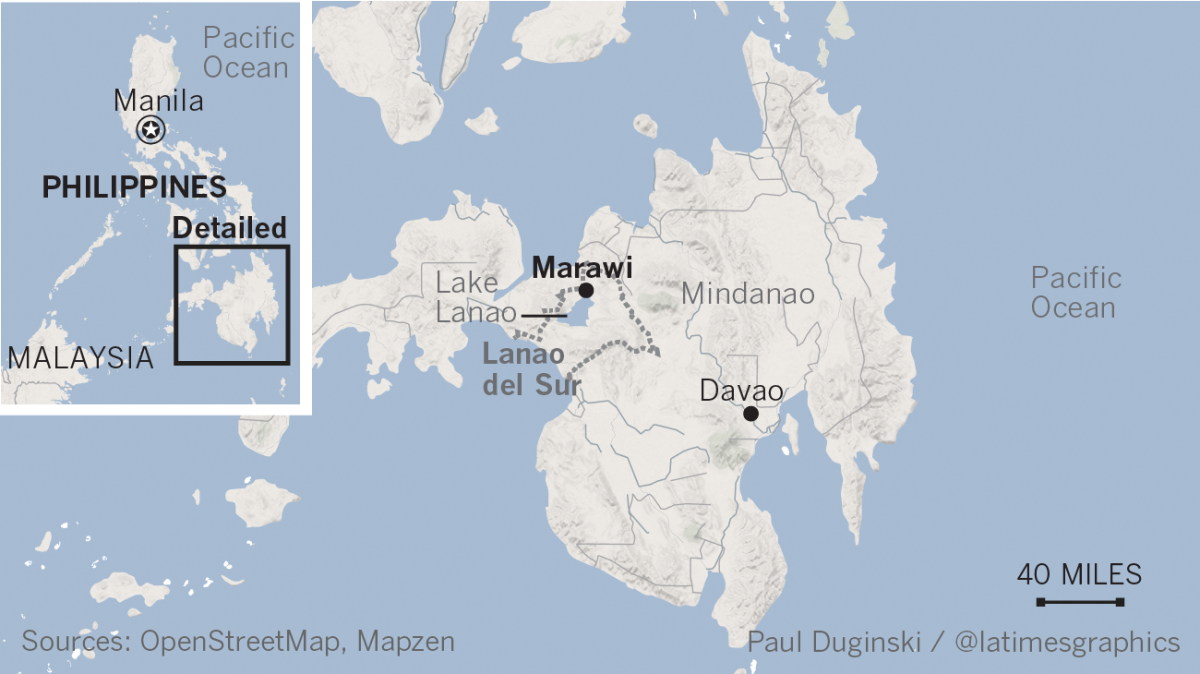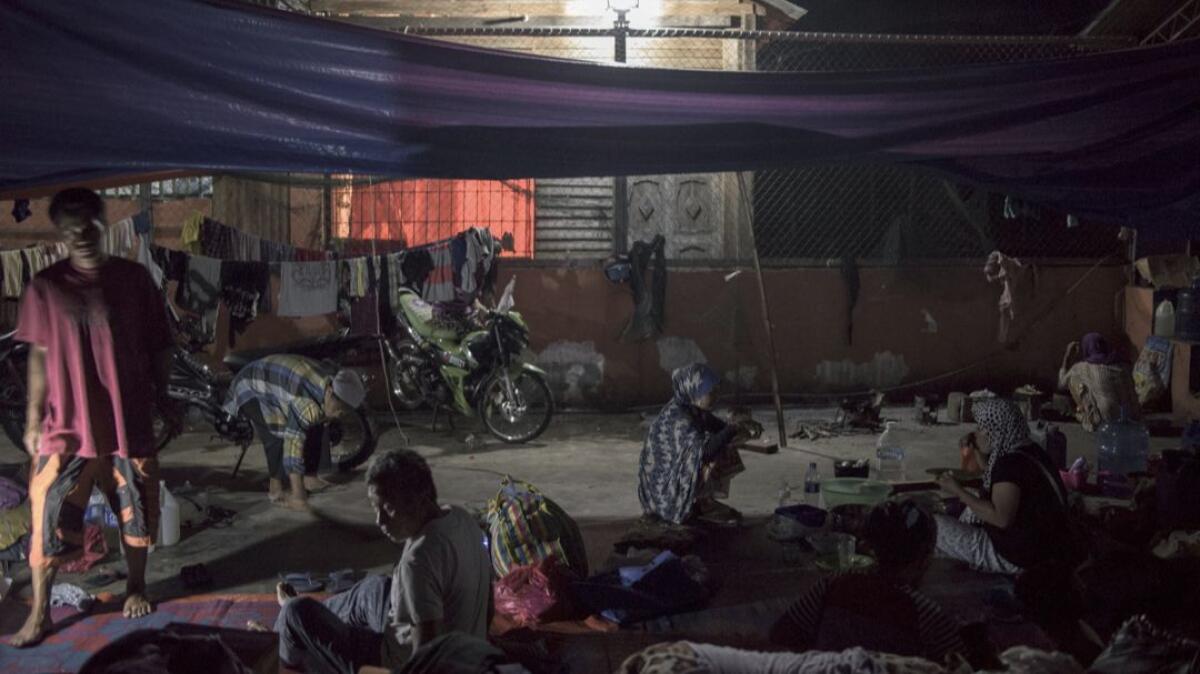Q&A: How militants linked to Islamic State took hold of a city in the Philippines

- Share via
One month after declaring martial law on the southern island of Mindanao, Philippine President Rodrigo Duterte proclaimed success this week in preventing groups linked to
The order in late May followed a week of violent clashes between government forces and fighters affiliated with Islamic State in the city of Marawi that left more than 100 people dead.
But how did groups hoisting the black flags of Islamic State all but take over this city of 200,000 people?
Here’s a look at the long history of Islamic insurgency on Mindanao and how it ended up in the latest round of violence.
History of Islamic insurgency on Mindanao
Mindanao is an island in the southern Philippines bordering Malaysia. It’s the second largest island in the country and is home to about 16 million people. More than half its population is Roman Catholic and around 20% are Muslim, according to the Philippine Statistics Authority.

The island, which has low literacy and life expectancy rates, has been the epicenter of a decades-long Islamic insurgency. Historians say its origins stem from 1968, when Christian officers killed around 28 Muslims — an incident known as the Jabidah massacre — sparking clashes that lasted years.
Fast forward to today, and at least four Muslim separatist groups on the island have pledged support to Islamic State. Analysts say that in order to expand their reach, many of these groups are forming coalitions and cooperating with each other.
Who are these groups?
- Abu Sayyaf Group
ASG is an Islamist militant group that formed in 1991, seeking an independent state for the Muslim population in Mindanao. Its leader, Isnilon Hapilon, pledged allegiance to Islamic State leader Abu Bakr Baghdadi in a YouTube video in 2014. Soon after, other members released a video that pledged support to Islamic State. In February, the group reportedly beheaded a German hostage whom it had held for three months.
- Maute
The Maute group is another radical Islamist organization on the island that fights the Philippine government and pledged support to Islamic State in 2015. The group formed in 2012 under the leadership of Omar Romato Maute. Many of its members come from other Muslim separatist groups on the island.
- Ansarul Khilafah Philippines
This group was led by Mohammad Jaafar Maguid, who died this year. The group has pledged to help Islamic State by facilitating recruitment and hosting training camps.
- Bangsamoro Islamic Freedom Fighters
This group is responsible for many of the attacks on the island. It is also a pro-Islamic State group. It first emerged in 2010 after it splintered off from the Moro Islamic Liberation Front.
What happened in Marawi?
The latest round of violence on Mindanao reached a boiling point May 23 when pro-Islamic State militants took control of several neighborhoods in the city of Marawi — one of the biggest Muslim cities in the Philippines.
Philippine forces clashed with militants linked to the Maute group when they attempted to capture Hapilon, the leader of Abu Sayyaf Group. Dozens of civilians died and thousands were stranded when Islamists and government forces launched into battle after the government’s failed attempt to capture him.
Duterte, who has taken a hard-line approach to fighting drug crimes in the Philippines, imposed martial law on Mindanao. Soon after, armed forces entered the city in an attempt to retake control and carry out arrests.
Was martial law successful ?
It might be too soon to tell.
On Friday, Duterte declared the first month of martial law a success, saying that government forces have so far been successful in regaining control in Marawi and driving out pro-Islamic State militants.
However, the fighting in Marawi has driven hundreds of thousands of residents out and as the fighting enters its second month, causalities continue to mount.

Sign up for Essential California
The most important California stories and recommendations in your inbox every morning.
You may occasionally receive promotional content from the Los Angeles Times.








